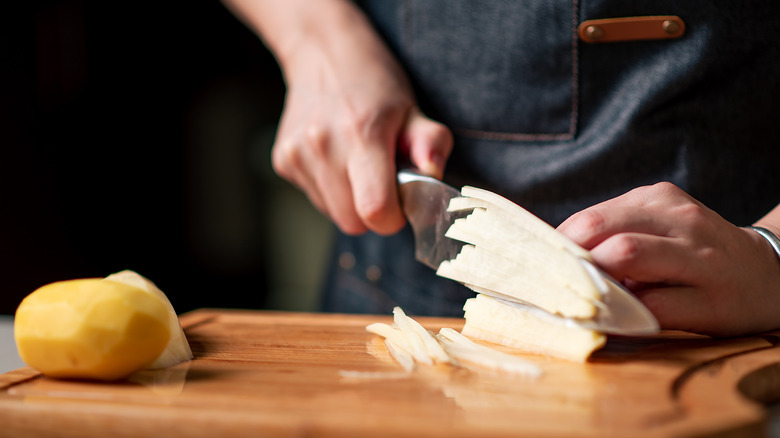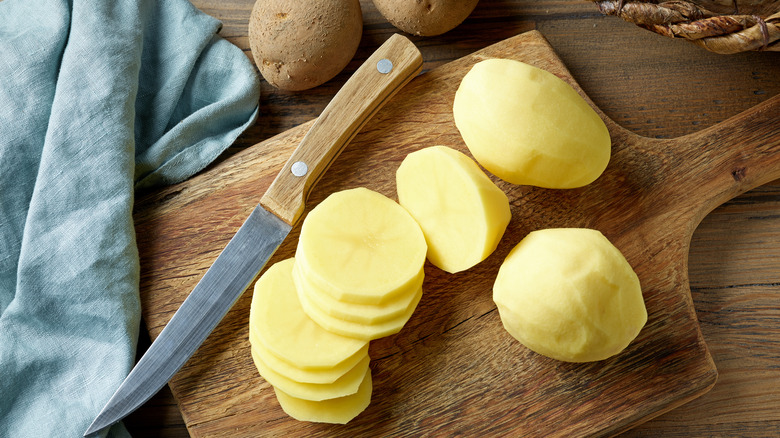The Right Way To Cut Potatoes So They Don't Stick To The Knife
Potatoes are truly one of the most versatile vegetables out there. Want to feed the kids something they will actually eat? Get fries. Want to cook something without much effort? Make baked potatoes. Looking for a way to thicken chicken curry? Throw in an extra potato.
Perhaps the minor downside to cooking potatoes at home is that the process of peeling the skin can be laborious. Similarly, cutting potatoes (or any other moist vegetable like onion or garlic) can be annoying because the slices or chunks stick to the side of the knife. This means you have to pause your cutting to slide the potato back onto the chopping board, which slows down the overall prep and cooking time.
There are a few ways to avoid this, but chef J. Kenji López-Alt's tip is to hold the knife at an upward angle so that only the tip is in contact with the potato and pull the knife deftly through it. This is slightly counterintuitive because most of us would chop the potatoes using an up-down motion, while this method calls for a front-to-back motion. But it works because the knife glides through the potato without sticking.
Pull the knife through the potato
Science has a very detailed explanation for why potatoes stick to the knife. The simple answer is surface tension. When you cut food that has high water content (e.g. potato, strawberry, zucchini), the moist surface sticks to the knife. This is exacerbated with potatoes, which have high levels of starch. The starch absorbs water when it is sliced or exposed to the atmosphere and this chemical reaction results in a gooey, adhesive texture that causes the potatoes to cling to the knife.
This is why using a slicing motion (similar to the motion you'd use with a razor cutter) rather than a direct downward motion typical of dicing works. This reduces the chances of squishing the potatoes and releasing excess starch. It also works because the tilt of the knife minimizes the surface area of the knife in contact with the potatoes, which in turn reduces the chances of the starches reacting and creating a sticky layer.
Use a sharp, paring knife
This potato-slicing method works best if you use a sharp paring knife. This type of knife is designed to be used delicately with minimal force, so it is ideal for this particular technique. Similarly, knives with dimples or divots in the blade will also help reduce the surface area that is in contact with the potatoes, reducing surface tension. Whether or not you are willing to invest in these knives depends on how much time you spend chopping vegetables and how much this sticky problem annoys you.
But what if you shell out all this money for high-end knives and enlist the proper cutting methods and your potatoes still stick to the knife? Well, there is a chance it is because there is accumulated starch on the blade of the knife, so remember to stop and periodically wipe it with a tea or paper towel to remove any build-up of starch. With all these methods and suggestions, you can be the go-to potato head of your friend group and easily make potato gratin for the next potluck.


